March 28, 2021 M O D E R N A U P D A T E
Moderna is expected to earn $18.4 billion from its COVID vaccine this year. This vaccine was developed entirely with public funds. Corporate executives have already personally made over $300m as their share price has exponentially grown.
[Nick Dearden @nickdearden75]
Financial Times
https://www.ft.com/content/b8ad59ad-4ecf-4df8-a981-c52b6b848fa0
“The Boston-based biotech’s coronavirus vaccine revenue forecast is far higher than the $11.2bn analysts had predicted for 2021, as well as the $15bn that Pfizer said it expected when it reported earnings this month. Moderna said this number could rise because it was in discussions with governments about more vaccine orders for 2021 and 2022, as well as Covax, the vaccination programme for the developing world. Shares rose more than 8 per cent to $157.12 in early trading in New York. Stéphane Bancel, Moderna’s chief executive, said 2021 would be an “inflection year” for the company.
[…]
In the fourth quarter, Moderna reported revenue of $571m, from US government grants and sales of its Covid-19 vaccine after it became available in the US in December. The company’s net loss of $272m was wider than the $123m for the same period the year before.
[…]
Moderna also raised its minimum production for the year to 700m doses, up from 600m, while keeping the upper end of its target at 1bn. The company is expanding manufacturing for next year, to produce up to 1.4bn doses — and possibly more if it ends up giving half-doses as boosters. It expects $350m to $400m in capital expenditure in 2021.”
CNBC
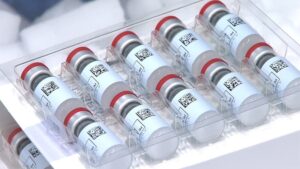
Vials of Johnson & Johnson’s Janssen coronavirus disease (COVID-19) vaccine.
via Reuters
‘The White House is considering whether to lift intellectual property protections on Covid-19 vaccines, sources say, which would allow other countries to replicate existing vaccines
- The White House is weighing whether to temporarily lift intellectual property protections on Covid-19 vaccines and treatments.
- The move would allow other countries to replicate existing vaccines.
- Concerns have grown about the fact that the U.S. and a handful of other wealthy countries hold the right to a disproportionate amount of the global supply.
A temporary suspension of intellectual property protections would apply to all medical technologies to treat or prevent Covid-19. South Africa and India made a formal request to the World Trade Organization to waive the protections until the pandemic is over, but the issue was tabled without a resolution.
The White House convened a meeting of deputy-level policymakers on March 22, a senior administration official said, but they reached no final decision.
The White House’s review comes in response to a letter sent in late March by House Speaker Nancy Pelosi, urging the administration to study the issue after several Democratic colleagues — including Reps. Earl Blumenauer of Oregon, Rosa DeLauro of Connecticut and Jan Schakowsky of Illinois — brought it to her attention. The letter has not been released to the public. But a senior aide said Pelosi supports the position of her members, who are in favor of issuing such a waiver, even on a temporary basis.
“The view is ‘We’re not safe until the world is safe,’” one of the sources said of the support from progressives on Capitol Hill.’
We must. -dayle
November 16, 2020 Don’t show the COVID graphs, show the COVID victim body bags. -dayle
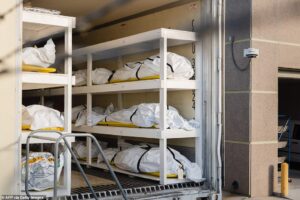
#CovidSyndrome
‘The U.S. news media’s heavy circulation of images of dead soldiers returning home from Vietnam in “body bags” is associated with popular political disaffection with war commonly called “Vietnam Syndrome.”’


[Texas Images: Getty/Rueters]
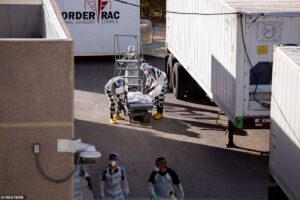
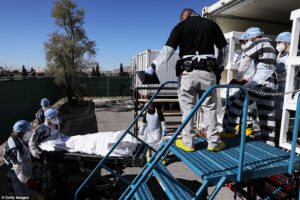
Restive Peace: Body Bags, Casket Flags, and the Pathologization of Dissent
by William O. Saas and Rachel Hall
Rhetoric and Public Affairs
Published By: Michigan State University Press
Abstract
The U.S. news media’s heavy circulation of images of dead soldiers returning home from Vietnam in “body bags” is frequently offered as an explanation for the state of popular political disaffection with war commonly called “Vietnam Syndrome.” We argue that the rhetoric of Vietnam Syndrome misdiagnoses dissent against war as a photo-pathogenic affective disorder, a visually transmitted disease of the popular political mind. In their respective attempts to stave off the syndrome, Presidents George H. W. Bush and George W. Bush enacted visual quarantines of deceased U.S. soldiers—first in 1991 and again in 2003. Our analysis suggests that President Obama’s lifting of the ban in 2009 represented not only a more precise grasp of U.S. war history but also a cynical recognition of the limited need for popular assent in executing the war on terror.
Washington Post
“The number of coronavirus cases in the United States passed 11 million on Sunday. It took 100 days for the nation to log its first 1 million cases; it took just six days to get from 10 million to 11 million. The number of people being hospitalized with covid-19 is also higher. Fearing that the worsening crisis will lead to even more preventable deaths.”
CNN
U.S.
11,163,990 Cases
246,953 Deaths
CNBC/11.16.20
‘Dr. Anthony Fauci warns “it’s not going to be a light switch” back to normalcy even when a Covid-19 vaccine becomes available to the public.
In fact, Fauci recommends people still wear masks and practice social distancing even after getting the vaccine, he told CNN’s Jake Tapper on “State of the Union” on Sunday.
Because “even though, for the general population, it might be 90[%] to 95% effective,” said Fauci, “you don’t necessarily know, for you, how effective it is.” Even at those success rates, about 5% to 10% of people immunized may still get the virus.
“In addition, the protective effect of a vaccine may take at least one month, if not slightly longer,” says Dr. David Ho, a virologist working on developing monoclonal antibody therapies for Covid-19 at Columbia University. (So far, Pfizer said early results showed its two-dose vaccine showed 90% effectiveness seven days after the second dose. Early data on Moderna’s two-dose vaccine showed 94.5% efficacy two weeks after the second dose.)
“Therefore, for the foreseeable future, we will need to continue our mitigation measures, including wearing masks,” Ho says, noting that precautionary measures will likely last “for much of 2021.”
Dr. Bruce Hirsch, an infectious disease specialist at Northwell Health, adds that many people have strong feelings about vaccines and may not take them, which “will impact the general population from being immune to Covid-19 and prolong the threat of the pandemic.”
Fauci predicted to Tapper that most of the country will get vaccinated in the second or third quarter of 2021.
But “we are not going to turn [the pandemic] on and off, going from where we are to completely normal. It’s going to be a gradual accrual of more normality as the weeks and the months go by, as we get well into 2021,” he said.’
https://www.cnbc.com/2020/11/16/fauci-why-still-need-masks-social-distancing-after-covid-19-vaccine.html
June 25, 2020 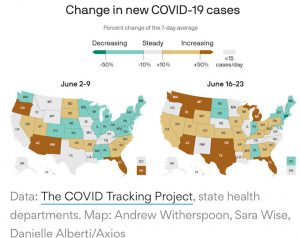
U P D A T E
WASHINGTON POST/Thursday, June 25th
State health departments reported 38,115 new infections on Wednesday, the highest single-day caseload in the United States since the pandemic began. As for the total, true number of infections, CDC Director Robert Redfield said Thursday: “Our best estimate right now is that for every case that’s reported, there actually are 10 other infections.”
The new spike was caused by a rush to reopen without proper safety measures in place, infectious-disease experts say, and the push to do so, even as cases climb, sends a dangerous and inaccurate message.
AXIOS
‘A nationwide crisis, made worse by a vacuum of political leadership, threatening to overwhelm hospitals.’
The pandemic is getting dramatically worse in almost every corner of the U.S., Axios health care editor Sam Baker and visual journalist Andrew Witherspoon report.
 This is the grimmest map in the eight weeks since Axios began tracking the state-by-state change in new cases.
This is the grimmest map in the eight weeks since Axios began tracking the state-by-state change in new cases.-
- Nationwide, cases are up 30% compared to the beginning of this month
- Dramatically worsening outbreaks in several states are beginning to strain hospital capacity — the same concern that prompted the nationwide lockdown in the first place.
- Over half the country — 26 states — has seen its coronavirus caseloads increase over the past week.
Trying to unpack this logic:
Governor Brad Little, (R) Idaho, will not mandate masks because “compliance would be terrible.”
Boise (Ada County) COVID numbers, like in Arizona, California, Texas, and Florida, continue to exponentially increase.
From Boise State Public Radio [KBSX] reporter Heath Druzin:
On the day the governor says Idaho is not meeting its #COVID19 goals, and in the midst of a local outbreak, just saw a @CityOfBoise employee pull up in a city car and walk into a gas station store with no mask. So that’s how seriously we’re taking the pandemic right now.
More from Heath:
Idaho saw its highest number of lab-confirmed COVID-19 cases in a single day Wednesday, with 223 and another 20 probable cases. There was also an additional death, bringing the state’s total to 90.

Wednesday’s total includes 101 cases in Ada County, which is in the midst of a spike, with some tied to downtown bars where patrons did not practice physical distancing. In response, Central District Health has ordered bars in the county to close again and the county to return to Phase 3 of reopening.
There have been 908 cases over the last seven days, representing by far the worst week for COVID-19 infections in Idaho since the pandemic began in March. In addition, Idaho Gov. Brad Little announced the first confirmed infection of an inmate at an Idaho correctional center.
https://www.boisestatepublicradio.org/post/idaho-sees-highest-one-day-covid-19-total
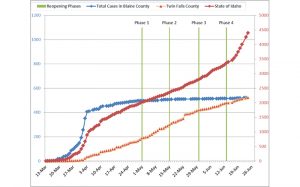
Vacation bookings are up in the Mountain West with folks looking for outdoor escape from their own dramatically increasing COVID numbers. Guides report a record increase in bookings. From Eye On Sun Valley:
Silver Creek Outfitters’ three dozen fishing guides have seen a record number of requests for guided fishing outings this summer from out-of-state visitors eager to escape coronavirus lockdowns.
While grateful for the extra business, it does present a conundrum for some.
“Terry Ring has put a whole lot of precautions in place and fly-fishing is an activity in which you can social distance,” said fishing guide Bob Knoebel. “But, while I feel confident with most of the people in the valley, I’m not as comfortable with people from outside the valley because I have no idea where they’ve been and who they’ve been with.
From CDC website. (A reminder to consider the source.)
“Do we need to get a flu vaccine earlier this year (i.e. July/August)?
While the Advisory Committee on Immunization Practices has not yet voted on the flu vaccine recommendations for 2020-2021, CDC does not anticipate a major change in the recommendation on timing of vaccination. Getting vaccinated in July or August is too early, especially for older people, because of the likelihood of reduced protection against flu infection later in the flu season. September and October are good times to get vaccinated. However, as long as flu viruses are circulating, vaccination should continue, even in January or later.
Will there be changes in how and where flu vaccine is given this fall and winter?
How and where people get a flu vaccine may need to change due to the COVID-19 pandemic. CDC is working with healthcare providers and state and local health departments to develop contingency plans on how to vaccinate people against flu without increasing their risk of exposure to respiratory germs, like the virus that causes COVID-19.
Some settings that usually provide flu vaccine, like workplaces, may not offer vaccination this upcoming season, because of the challenges with maintaining social distancing. For more information on where you can get a flu vaccine, visit www.vaccinefinder.govexternal icon.”
CNBC
The National Institutes of Health has been fast-tracking work with biotech firm Moderna on a potential vaccine to prevent Covid-19, which has infected more than 6.28 million people worldwide and killed at least 375,987, according to data compiled by Johns Hopkins University.
Dr. Anthony Foci said earlier this month that the biotech company expects to enroll about 30,000 individuals when it begins a phase 3 trial in July. He said there are at least four trials for potential vaccines that he is either directly or indirectly involved in.
Fauci said that by the beginning of 2021 “we hope to have” hundreds of millions of doses.”
When asked whether scientists will be able to find an effective vaccine, Fauci said he’s “cautiously optimistic,” adding that “there’s never a guarantee.” He cautioned “it could take months and months and months to get an answer” before scientists discover whether the vaccine works.
U.S. officials and scientists are hopeful a vaccine to prevent Covid-19 will be ready in the first half of 2021 — 12 to 18 months since Chinese scientists first identified the coronavirus and mapped its genetic sequence.
It’s a record-breaking time frame for a process that normally takes about a decade for an effective and safe vaccine. The fastest-ever vaccine development, mumps, took more than four years and was licensed in 1967.
However, scientists still don’t fully understand key aspects of the virus, including how immune systems respond once a person is exposed. The answers, they say, may have large implications for vaccine development, including how quickly it can be deployed to the public.
C-SPAN
Dr. Fauci stestifying earlier this week in Washington D.C. on the federal pandemic response.
https://www.c-span.org/video/?473229-1/white-house-coronavirus-task-force-members-testify-federal-response-pandemic&live&vod






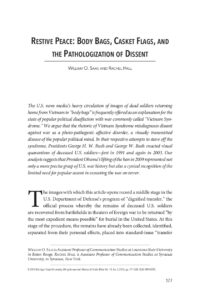

 This is the grimmest map in the eight weeks since Axios began tracking the state-by-state change in new cases.
This is the grimmest map in the eight weeks since Axios began tracking the state-by-state change in new cases.
